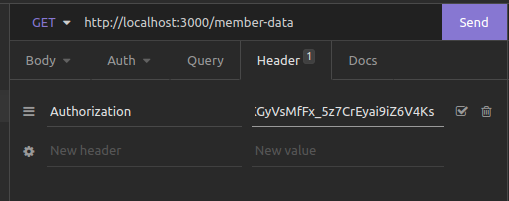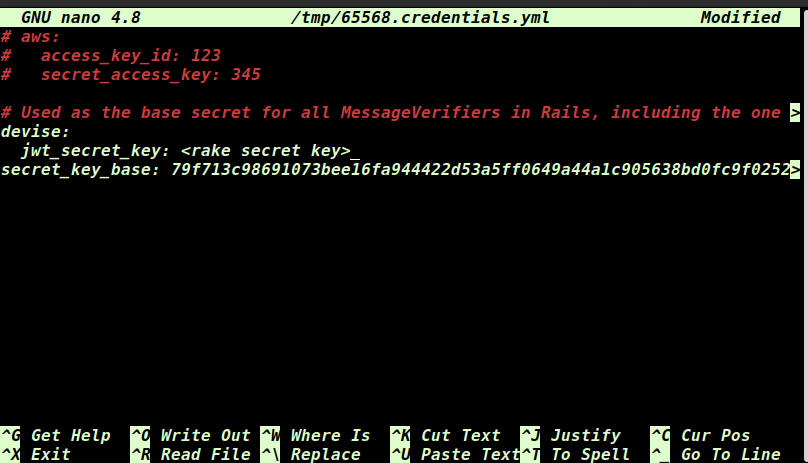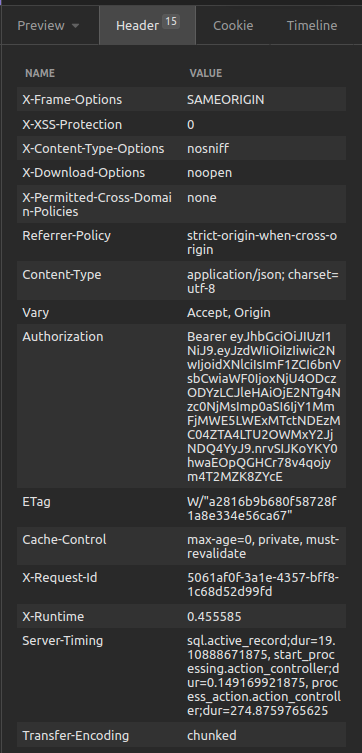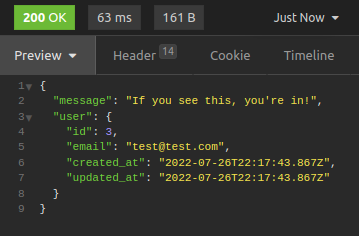Today we’ll walk through building a Rails backend using Devise-JWT which allows users to log in, access endpoints requiring authentication, and log out.
JWTs or JSON Web Tokens are most commonly used to identify an authenticated user. They are issued by an authentication server and are consumed by the client-server (to secure its APIs).
Create a rails app from the command line.
$ rails new devise-jwt-app -T -d postgresql --api
$ cd devise-jwt-appAdd devise, devise-jwt and rack-cors to the Gemfile.
gem 'devise'
gem 'devise-jwt'
gem 'rack-cors'Run bundle to install them.
$ bundle installconfigure the cors file to allow all Authorization headers.
config/initializers/cors.rb
Rails.application.config.middleware.insert_before 0, Rack::Cors do
allow do
origins '*'
resource(
'*',
headers: :any,
expose: ["Authorization"],
methods: [:get, :patch, :put, :delete, :post, :options, :show]
)
end
endUsing origins ‘*’ is for our convenience. When deploying to production, set origins to the URL of your frontend app. Otherwise the whole internet will be able to hit your API. Though in some cases that’s desirable.
$ rails generate devise:installNow create a model and migration with devise, and migrate to generate tables.
$ rails g devise User
$ rails db:create db:migrateUpdate the generated User model with the following code.
class User < ApplicationRecord
devise :database_authenticatable,
:jwt_authenticatable,
:registerable,
jwt_revocation_strategy: JwtDenylist
endCreate another model file called jwt_denylist.rb and paste in the following.
class JwtDenylist < ApplicationRecord
include Devise::JWT::RevocationStrategies::Denylist
self.table_name = 'jwt_denylist'
endCreate a migration to go along with it.
$ rails g migration CreateJwtDenylistUpdate it to this.
class CreateJwtDenylist < ActiveRecord::Migration[7.0]
def change
create_table :jwt_denylist do |t|
t.string :jti, null: false
t.datetime :exp, null: false
end
add_index :jwt_denylist, :jti
end
endAnd migrate.
$ rails db:migrateThis sets up a table which tracks JWT tokens that have been logged out and should no longer have access to the app.
run the following to create a controller for the user model.
$ rails g devise:controllers users -c sessions registrationsand add the fallowing to the sessions controller.
class Users::SessionsController < Devise::SessionsController
respond_to :json
private
def respond_with(resource, _opts = {})
render json: { message: 'You are logged in.' }, status: :ok
end
def respond_to_on_destroy
log_out_success && return if current_user
log_out_failure
end
def log_out_success
render json: { message: "You are logged out." }, status: :ok
end
def log_out_failure
render json: { message: "Hmm nothing happened."}, status: :unauthorized
end
endthen the registrations controller.
class Users::RegistrationsController < Devise::RegistrationsController
respond_to :json
private
def respond_with(resource, _opts = {})
register_success && return if resource.persisted?
register_failed
end
def register_success
render json: { message: 'Signed up sucessfully.' }
end
def register_failed
render json: { message: "Something went wrong." }
end
endAdd one more controller, controllers/members_controller.rb, so we can test logged-in VS logged-out behaviour on an endpoint that required authenticating.
controllers/members_controller.rb
class MembersController < ApplicationController
before_action :authenticate_user!
def show
render json: { message: "If you see this, you're in!", user: current_user }, status: :ok
end
endnow theres a problem with devise and rails 7 considering the sessions and this is how we fix it.
first we need to create a new file in controller/concerns/rack_session_fix.rb
module RackSessionFix
extend ActiveSupport::Concern
class FakeRackSession < Hash
def enabled?
false
end
end
included do
before_action :set_fake_rack_session_for_devise
private
def set_fake_rack_session_for_devise
request.env['rack.session'] ||= FakeRackSession.new
end
end
endthen we need to add the following to the 'registrations' controller.
class Users::RegistrationsController < Devise::RegistrationsController
include RackSessionFix
...
endnow the session will work.
Update config/initializers/devise.rb. Add this to the file inside the config block.
config.jwt do |jwt|
jwt.secret = Rails.application.credentials.devise[:jwt_secret_key]
endThis tells Devise-JWT to use a secret key specified in our credentials file to build tokens.
Now generate a secret key. And note the output. We’ll add this into our credentials file momentarily.
$ rake secretcopy the secret key.
This is a secret key that should be kept secret.
Open the credentials file from the command line.
$ EDITOR=nano rails credentials:editAnd paste in the following, with the key generated from running rake secret above.
devise:
jwt_secret_key: <rake secret key>Then save the file.
ctrl+x, then y, then enter to close and save if you’re using the nano editor.
Update your routes so they point to your new controllers, rather than to the default devise controllers.
config/routes.rb
Rails.application.routes.draw do
devise_for :users,
controllers: {
sessions: 'users/sessions',
registrations: 'users/registrations'
}
get '/member-data', to: 'members#show'
endNow let’s make some request to test it out.
we are going to test the routes we just created with insomnia but you can use postman or whatever you prefer.
first we start the server.
rails sthen we can make requests to the following endpoints to create a user.
http://localhost:3000/usersRegister a user.
{
"user": {
"email": "test@test.com",
"password": "password"
}
}we can find the authorization token in the response in the header.
now to log in.
http://localhost:3000/users/sign_in{
"user": {
"email": "yahya1@gmail.com",
"password": "123123"
}
}http://localhost:3000/member-datawe need to copy the authorization token from the response we got from the sign up request or the sign in request.
and add it to the header, that we are going to send to the server.

then we send the GET request to the server.
now we get the response with the user data.
i hope you enjoyed this tutorial and learned a lot about Devise and Rails.
if you have any questions, please feel free to contact me.
and don't forget to leave a star on the repo ^^.




